DU8002 is one of the models from Samsung's Crystal UHD series, which works well as a television for everyday, occasional use. The Smart TV system based on Tizen runs really well – it’s quick, has a rich selection of applications, and a user-friendly interface, making daily use easier. In home use, the television stands out with great viewing angles, ensuring that even people sitting at the side will have a good picture. It's worth mentioning the small, handy remote that can easily control external devices such as Canal+ decoders. This somewhat compensates for the lack of recording features and adds versatility to the television. As for gaming, the DU8002 will be sufficient for those who spend time in front of the television in a casual manner. Low input lag and the ALLM feature ensure that gameplay is smooth and comfortable. Due to the television’s segment, there are also some compromises – the IPS matrix provides good viewing angles, but this comes at the cost of contrasts, which are rather average. Additionally, low brightness can be a downside in well-lit rooms. In summary, the DU8002 is a solid choice considering its price. However, if we are thinking about a Samsung television and want a better experience watching high-quality content, it’s worth considering an upgrade to the Q60D model from the QLED series. For a little more, you can get better picture quality and a broader set of features, which could be a more satisfying investment.
- Matching (Score)
- Our verdict
- TV appearance
- Where to buy
- Contrast and black detail
- HDR effect quality
- Factory color reproduction
- Color reproduction after calibration
- Smoothness of tonal transitions
- Image scaling and smoothness of tonal transitions
- Blur and motion smoothness
- Console compatibility and gaming features
- Input lag
- Compatibility with PC
- Viewing angles
- TV efficiency during daytime
- Details about the matrix
- TV features
- Apps
- Playing files from USB
- Sound
Samsung DU8002 (IPS) vs Samsung U8000F (VA)
Direct compare
DU8002 / DU8072
U8000F / U8092F


Panel type: LCD IPS
Resolution: 3840x2160
System: Tizen
Model year: 2024
Complete the survey to find out the result

Panel type: LCD IPS
Resolution: 3840x2160
System: Tizen
Model year: 2025
Complete the survey to find out the result

Overall rating
5.6
5.7
Movies and series in UHD quality
5.0
5.7
Classic TV, YouTube
4.8
5.9
Sports broadcasts (TV and apps)
5.5
5.5
Gaming on console
6.5
6.5
TV as a computer monitor
6.0
6.0
Watching in bright light
4.2
3.8
Utility functions
6.3
5.3
Apps
8.7
8.7
Sound quality
5.9
5.7
Complete the survey to find out what fits your preferences
Advantages
Expanded and fluid operating system - Tizen
Great viewing angles
Perfect for PC work
Sleek, modern design – ideal for wall mounting
For casual gamers - low input lag and ALLM mode
*120Hz in the 85' variant
Great blacks and contrast (VA panel version)
Advanced Smart system: Tizen
Excellent for text work - displays fonts beautifully
Basic features for gamers - VRR and ALLM
Low input lag
Disadvantages
Very weak contrast
Average brightness
No recording feature
Low brightness
Worse viewing angles than the version with an IPS panel (Obvious, isn't it? 😉)
Infrared remote
Inferior appearance compared to its predecessor
Our verdict
Samsung U8000F with a VA panel is a television that can pleasantly surprise in its class – of course, if we know what to expect from it. The greatest strength of this variant is definitely the quality of blacks. Compared to the version with an IPS panel, the difference is huge – the image gains depth, contrast looks significantly better, and evening movie sessions no longer resemble watching content through a grey filter. For a device from the budget segment, this is really a nice surprise. Additionally, we have the proven Tizen system, which not only runs smoothly but also offers access to a full range of applications, support for SmartThings, and voice assistant (via an app). The PC mode and console connection work flawlessly – fonts are clear and readable. Plus, there are basic features for gamers, such as VRR and ALLM, which – although they won’t turn this television into an esports machine – are perfectly adequate for occasional gaming.
Of course, like any construction in this budget, the U8000F with a VA panel also has its limitations. Viewing angles are not its strong suit – watching the image from the side reveals a drop in quality. However, it’s hard to regard this as a serious drawback – because you gain some advantages elsewhere. Better blacks always come with a bit less flexibility in setting. When it comes to HDR, we have a rather symbolic approach – the brightness is too low to talk about a true “wow” effect, and the color palette is limited. But let's face it – that’s not the reason you buy such a television. So if you’re planning to purchase the U8000F, we definitely recommend opting for the variant with the VA panel. It’s still a very basic model, but in this version, it offers more than you might expect – especially in terms of black quality. And in this price range, that’s quite a lot.
TV appearance



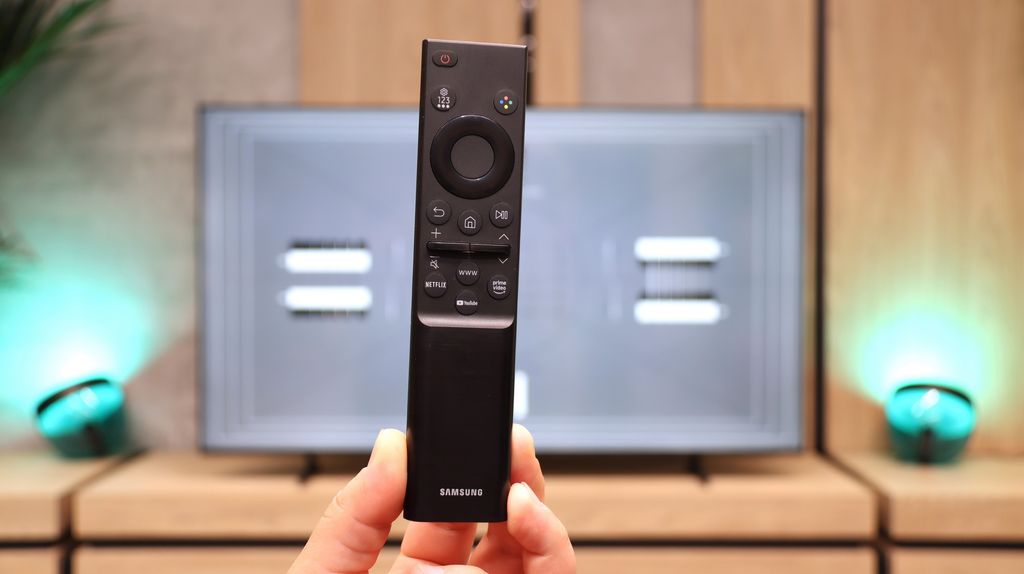
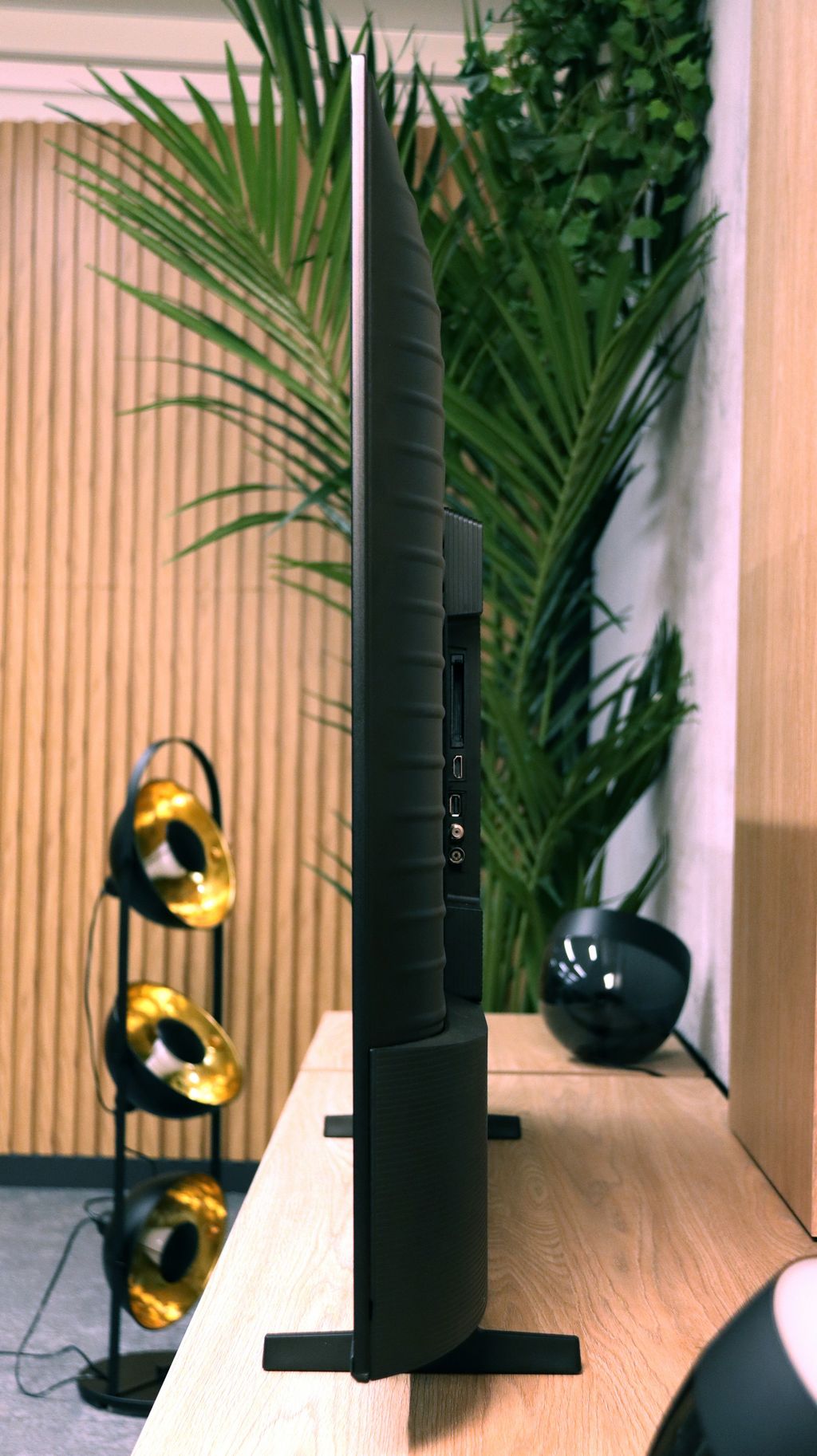
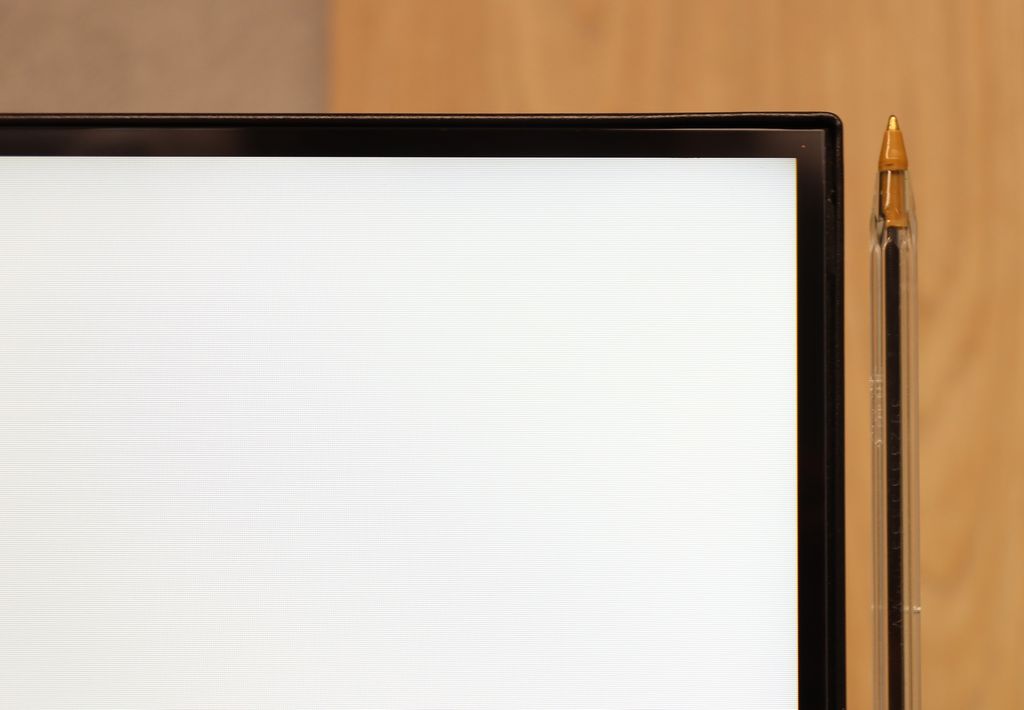
Contrast and black detail
1.1/10
5.3/10
Local dimming function: No
Local dimming function: No
Contrast:

Result
750:1

Result
850:1

Result
750:1

Result
700:1

Result
650:1

Result
4,600:1

Result
4,150:1

Result
3,900:1

Result
3,750:1

Result
3,400:1
Halo effect and black detail visibility:

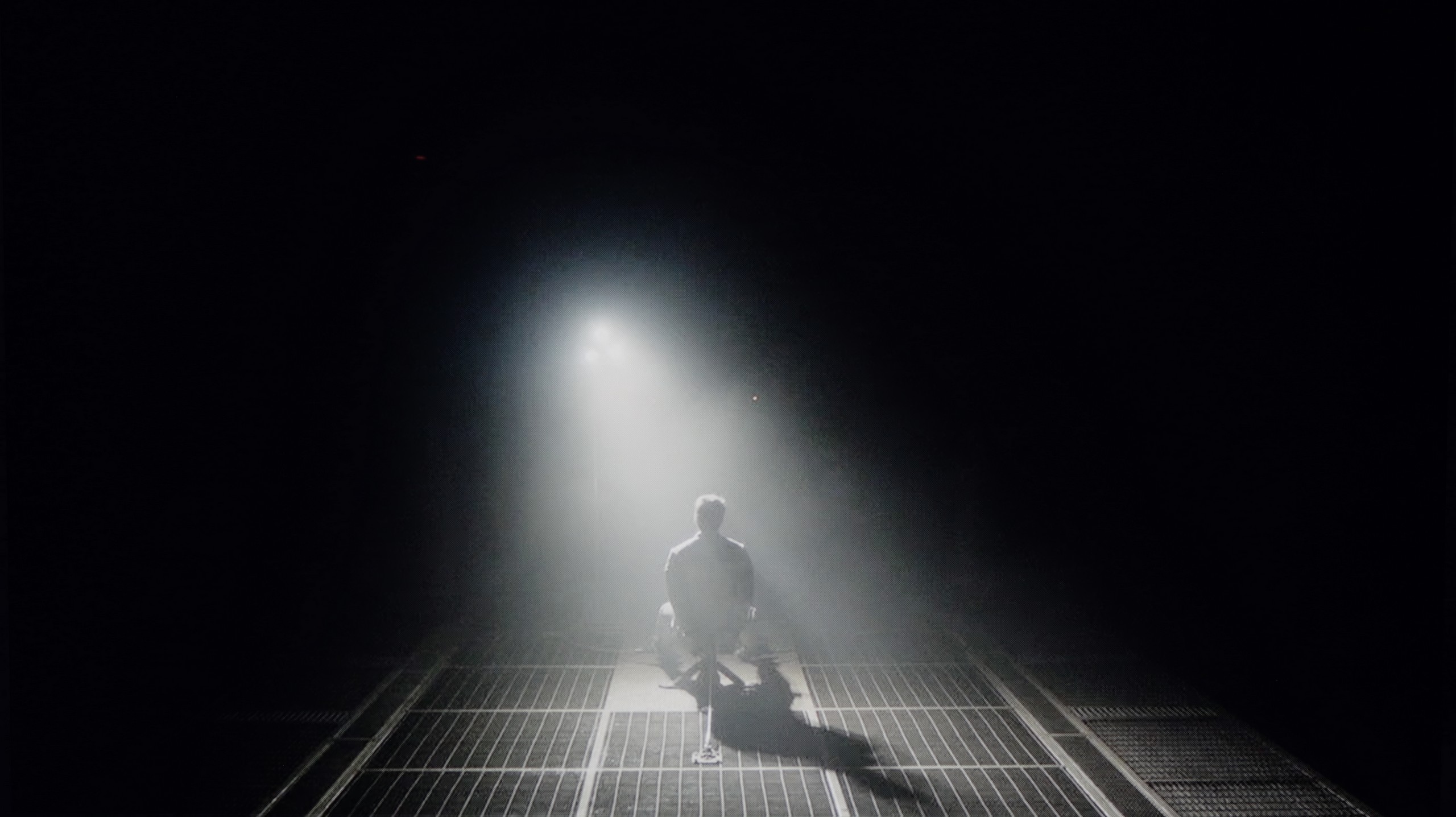
The DU8002 model in the 55-inch version is equipped with an IPS panel, which unfortunately does not favour high contrast. The result? Instead of deep black, we see shades of grey, which makes night scenes and darker parts of the film appear washed out and lacking in detail. The black in this model resembles a silvery sheen more than a deep, cinematic effect, which is a clear downside for fans of intense contrasts and dynamic images. In everyday use, such properties can significantly diminish the viewing experience.
It’s worth noting that the test concerns variants with a VA panel, which perform several times better in the categories of black levels and contrast than the 55-inch version equipped with an IPS panel. Thanks to the higher native contrast (although it’s not the top result among VA panels), the tested scenes looked significantly better – without noticeable greyish hues or the typical washed-out shadow effect found in IPS panels. The black levels in the U8092F model can be considered really good and satisfying, especially in this price range. Of course, this is not a design equipped with local dimming, so it’s hard to expect spectacular results in very challenging scenes. On the other hand, we’re talking about a remarkably budget-friendly television that performs quite solidly in its category.
HDR effect quality
4.2/10
3.1/10
Luminance measurements in HDR:

Result
278 nit

Result
272 nit

Result
297 nit

Result
277 nit

Result
272 nit

Result
212 nit

Result
173 nit

Result
265 nit

Result
90 nit

Result
250 nit
Scene from the movie “Pan” (about 2800 nits)


Scene from the movie “Billy Lynn” (about 1100 nits)


Static HDR10


Dynamic: HDR10+
Dynamic: HDR10+


HDR luminance chart:
Samsung U8000F (VA)
Luminancja HDR
Luminance of RGB colors
Samsung DU8002 (IPS)
Luminancja HDR
Luminance of RGB colors
The HDR effect on the DU8002 television leaves much to be desired. A brightness level of 300 nits is unable to provide a true high dynamic range experience, making the content viewed resemble more standard SDR than impressive HDR. Scenes that should dazzle with brilliance and detail appear muted and lack depth. Nevertheless, the television deserves praise for its high coverage of the DCI-P3 colour palette at 92%. This allows for vibrant and saturated colours, which may please viewers who prefer rich tones, even if the HDR effect does not fully meet expectations.
While the U8000F with its VA panel can still be praised for decent blacks, there are no such accolades when it comes to brightness—particularly in HDR scenes. The television only achieves a maximum of just under 250 nits, which is simply too low to talk about any impressive light effects. Bright elements appear washed out, and scenes that should shine look rather flat. An interesting situation occurred during our testing of a scene from the movie Sicario 2— the screen noticeably darkened, as if the television was trying to hide its limitations in displaying blacks. One might get the impression that the device artificially darkens the image to improve contrast, but in practice, the effect doesn't make much difference, apart from the fact that we see less on the screen. Additionally, there’s the issue of colours—the U8000F doesn’t support a wide colour gamut, so one shouldn’t expect vibrant, saturated hues known from better models. The HDR image here resembles a slightly brightened SDR and... maybe that’s not such a bad thing. For this model, it’s not worth expecting a cinematic experience—better to treat HDR as a modest addition.
Factory color reproduction
4/10
6.5/10


Factory Mode
After calibration
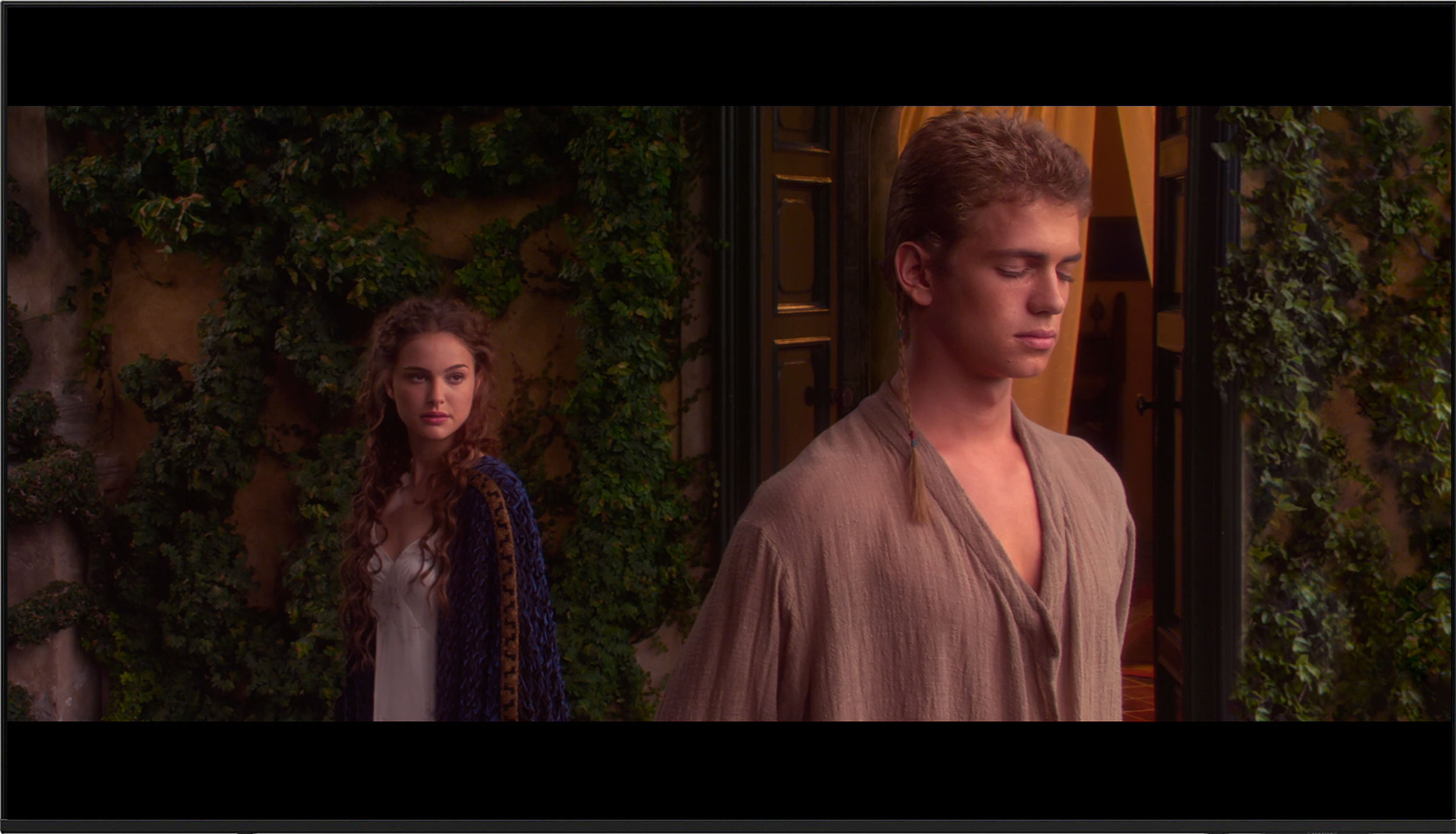
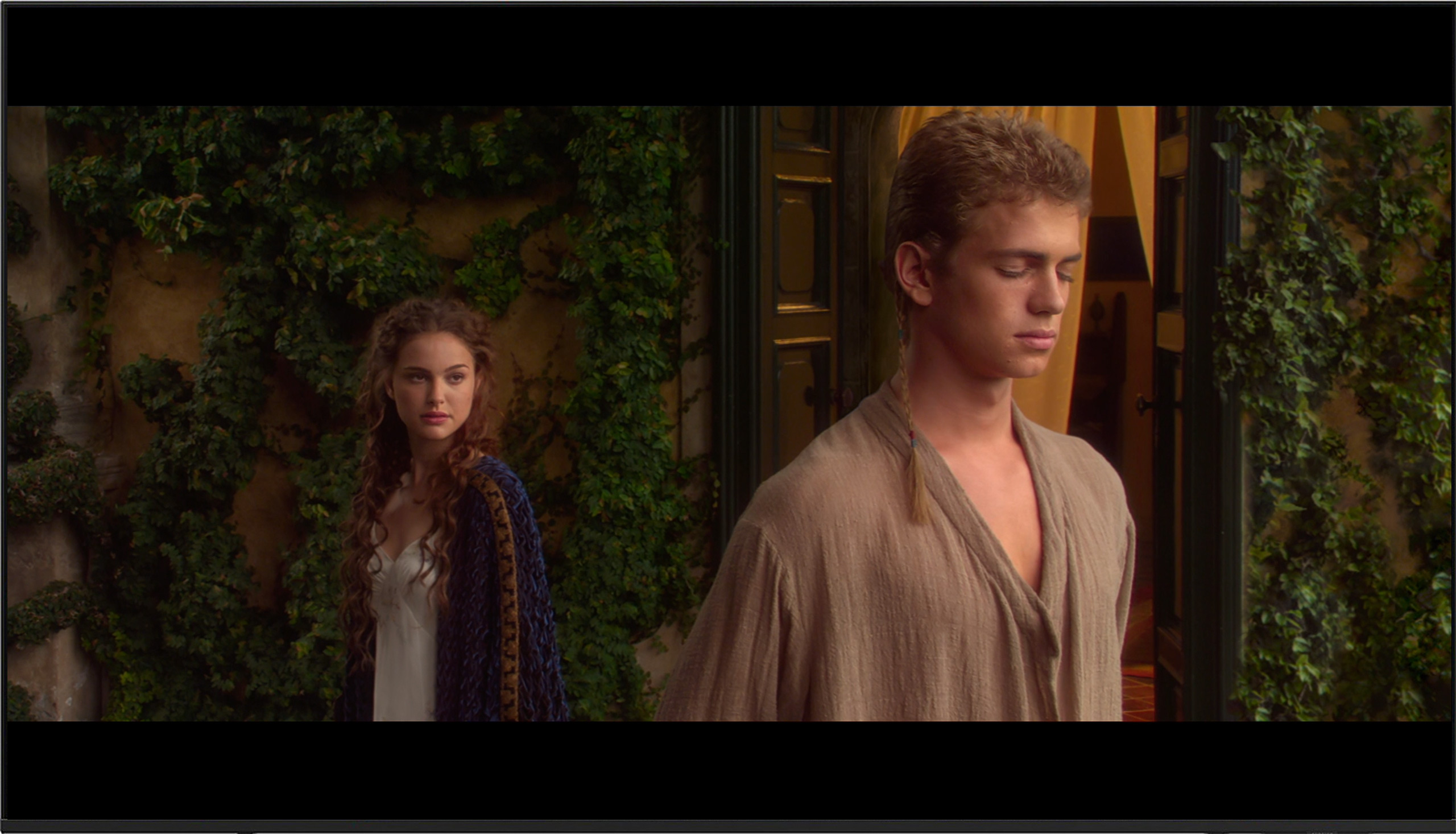
Factory Mode
After calibration
DU8002 offers a Filmmaker mode, which is supposed to provide authentic image reproduction in line with the creators' intentions. Unfortunately, despite its promising name, the effects are far from ideal. The white balance in this mode shows significant drops in blue colour, leading to a noticeable yellowing of the image, as seen in our comparison photo. Colour Checker tests confirm these errors. Regarding brightness, the gamma characteristic is too low compared to the reference line of 2.4, resulting in excessive screen brightness. A similar problem occurs with 4K content – the EOTF responsible for brightness in 4K materials shows significant increases above the reference line, leading to overly bright small light elements. As a result, the Filmmaker mode in DU8002 does not meet expectations and instead of providing high quality, presents an image full of tonal and colour inaccuracies.
Samsung U8000F has been tested by us in the best picture mode it offers out of the box – that is, Filmmaker Mode. This profile is supposed to theoretically provide a neutral, cinematic image, free of unnecessary enhancements and artificial beautifications. In the case of SDR content – mainly in HD or SD resolution – the television already presented itself surprisingly reasonably right out of the box. The only noticeable imperfection was brightness management. The gamma chart showed some deviations – slight brightening or dimming of certain tones – but in practice, this did not significantly affect the viewing experience. For a television in this segment, it performs quite well.
However, the situation in HDR mode looks significantly weaker. Although white balance was still acceptable, colour errors were very evident. In the Color Checker test, almost every sample was outside the target point, and the image itself appeared unnatural – colours were skewed, sometimes too cool, and at other times simply dull and lifeless. The main issue lies in hardware limitations – the U8000F does not support the wide colour gamut of DCI-P3, so it is physically unable to reproduce the colours that the HDR standard intends. Unfortunately, this is evident in almost every more demanding scene.
Color reproduction after calibration
7.8/10
7.5/10




Samsung is one of those companies that offers advanced tools to enhance picture quality in its televisions, including a 20-point white balance adjustment. Even in the budget model DU8002, after proper adjustments, surprisingly good results can be achieved. The white balance, especially for HD content, performs really well – tests on the Colour Checker palette confirm accuracy levels of 2–1.5, which indicates the significant capabilities of this television in colour reproduction. In 4K content, although not as perfect as in lower quality material, the overall picture looks much better.
The gamma brightness has also been significantly adjusted, meaning the image is not overly brightened and appears more natural. What about the EOTF curve? At first glance, it seems fine, but upon closer inspection, especially in film tests, it's clear that the television struggles due to its low-contrast panel. And the EOTF drops below the reference line. Nevertheless, the DU8002 is an example of a budget model where investing in calibration is worthwhile. Although construction flaws, such as the type of backlighting, cannot be completely eliminated, colour accuracy is surprisingly good, especially considering its price.
Right out of the box, the U8000F offered a pretty decent picture in SDR for its price range. We managed to tweak it a bit further – we reduced a slight purple tint and improved the gamma characteristics, giving it a more natural curve. Despite these adjustments, the TV still has a tendency to overly brighten the brightest details – the gamma chart shows a clear break that cannot be fully corrected.
On the other hand, in HDR mode, it’s noticeably weaker. It's hard to talk about any significant improvement – despite attempts to fine-tune the settings, the picture still presents considerable colour errors. A Delta E exceeding 7 indicates noticeable deviations that we couldn’t effectively reduce. Unfortunately, this is a limitation of the construction itself – the U8000F simply wasn't designed for serious HDR. In daily SDR viewing, it performs quite well, but for HDR content... it’s best not to have overly high expectations.
Smoothness of tonal transitions
7.3/10
9.5/10







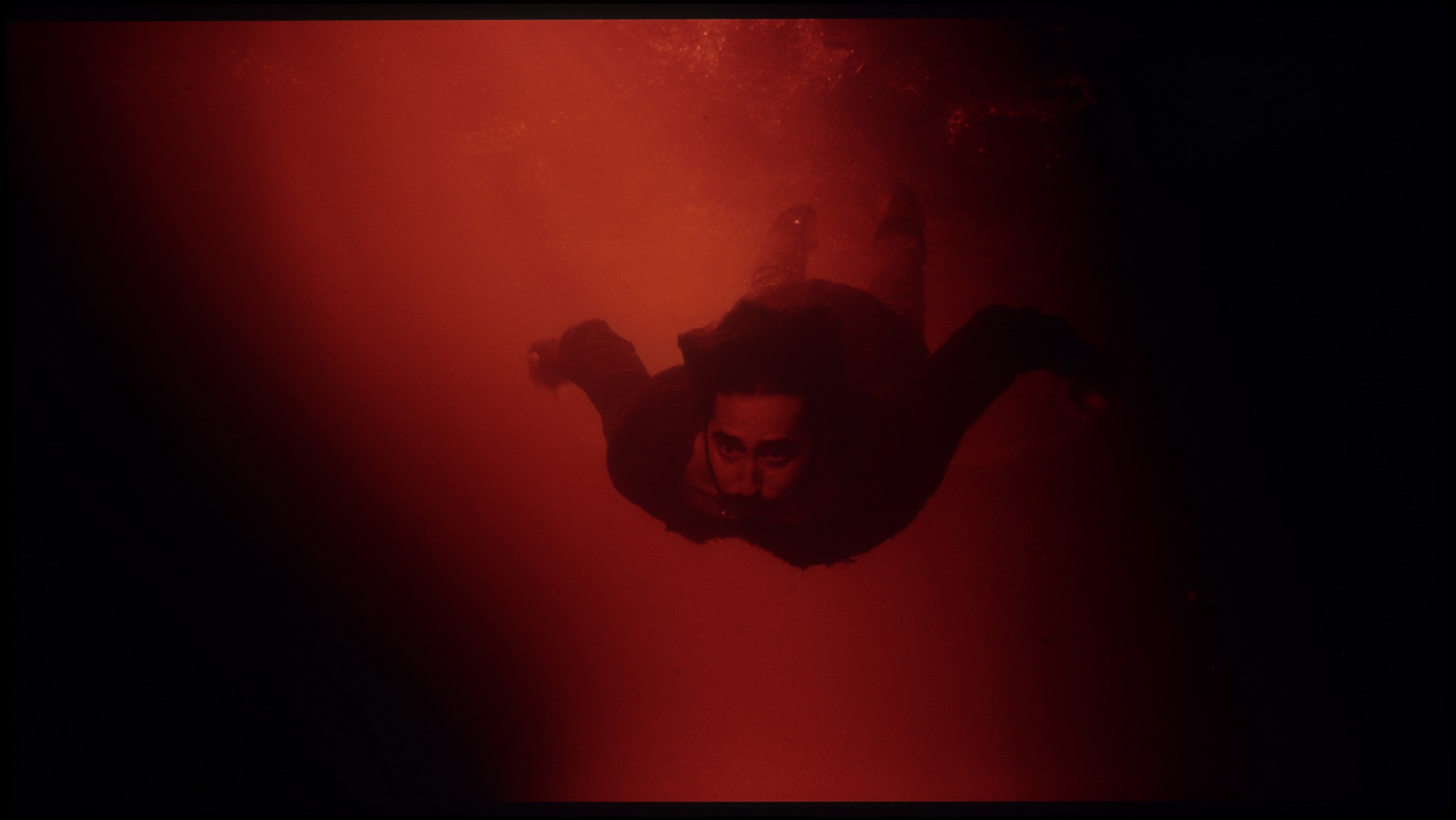




During the gradation tests on the DU8002, some imperfections were noted in most scenes, although they were not intense enough to immediately attract attention. The biggest challenge was bright colours, which did not always maintain smooth transitions. Nevertheless, more complex scenes towards the end of the test surprised positively, where the television performed better than expected, which had a positive impact on the final assessment.
One of the essential elements affecting the perception of the image is the way in which the television handles tonal transitions – that is, blending colours and shades without clear boundaries. In the case of the Samsung U8092F model, this performed really well. On the test screens, we did not observe any visible banding or disturbances in the colour gradients. The image retains a natural character, without excessive digital interference, which unfortunately tends to be the norm in this class of equipment. Minimal imperfections appeared in very bright sections, but they are practically unnoticed and do not affect the daily use of the television.
Image scaling and smoothness of tonal transitions
5.4/10
5/10
Smooth transition function

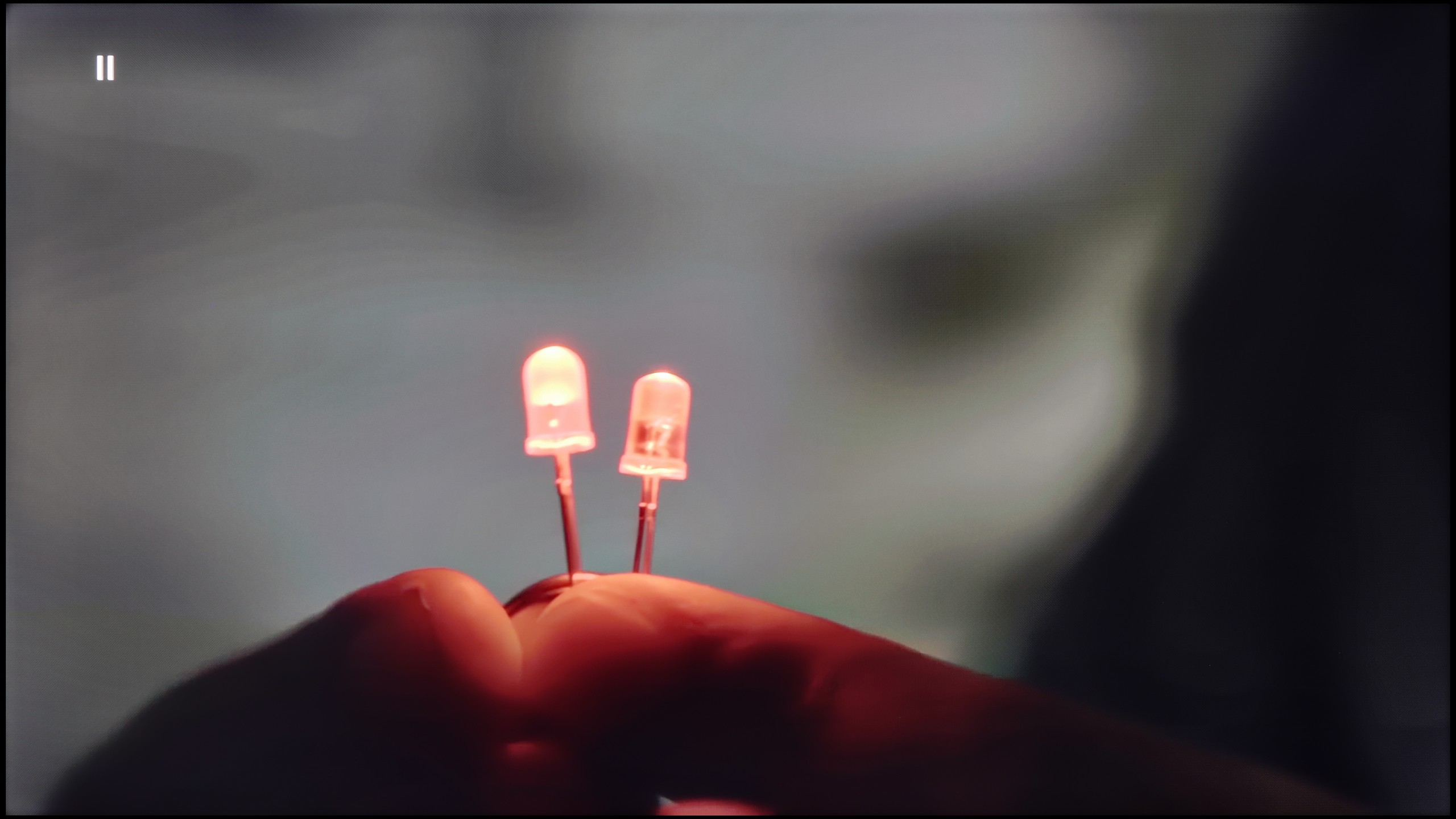
Image without overscan on the SD signal


Smoothing tonal transitions on the DU8002 television leaves mixed feelings. Although the menu has an option for smoothing tonal transitions, in practice it yields no results and can even generate unwanted side effects.
Nonetheless, the television handles upscaling, or digital image processing, exceptionally well. The test pattern with the model looked really good – the image isn't overly jagged, and the overall presentation is decent and pleasing to the eye. This is definitely good news for those planning to watch traditional television on this model.
When it comes to how the Samsung U8000F handles lower-quality materials, we have to admit that Samsung has made progress compared to its predecessor from last year – the DU7192 model, which theoretically occupies the same place in the lineup. This year’s model is equipped with a feature that improves the smoothness of tonal transitions, which has been implemented much better than last year. Yes, the television still uses quite strong algorithms that can distort details or remove film grain, but still – it can be confidently said that it works effectively. However, not everything has gone perfectly. The U8000F has noticeable issues with slight image stuttering when watching very old content in very low resolution. If someone plans to play their old VHS tape, they must be prepared for the image to look slightly “choppy”.
Blur and motion smoothness
5/10
5.5/10

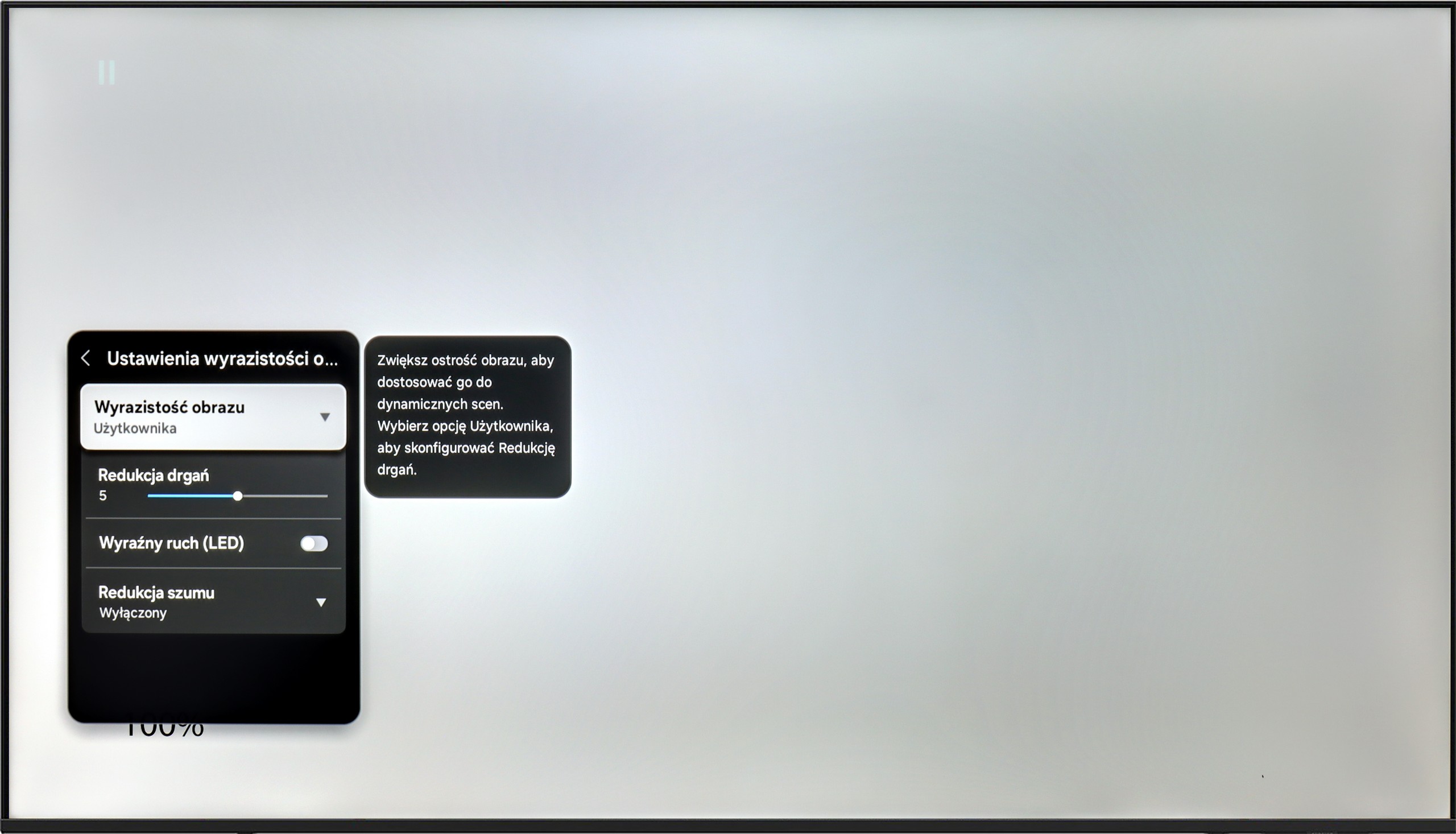
Blur (native resolution, maximum refresh rate):






Blur (BFI function enabled):



Image flickers in this mode



Smużenie ():
Smużenie (Upłynniacz ruchu 4K@60Hz):
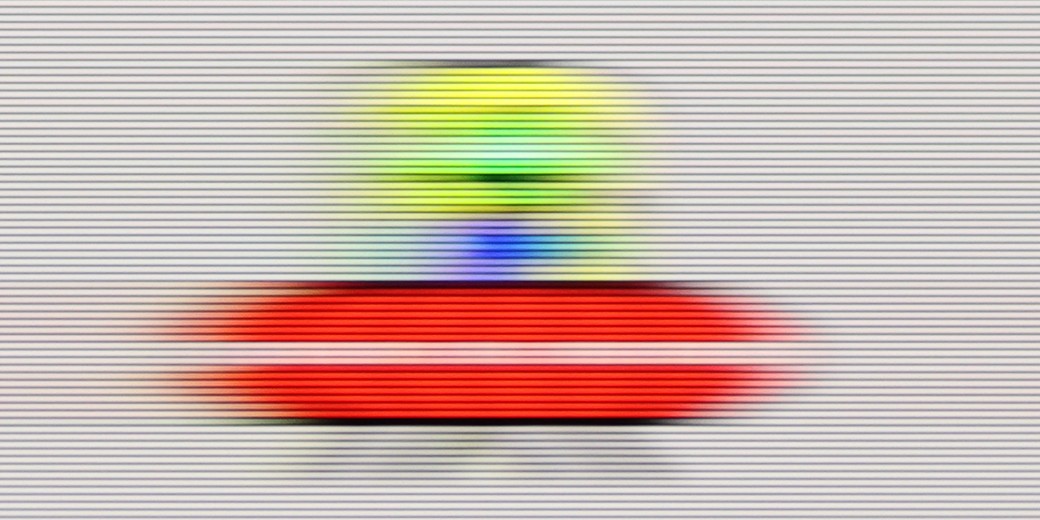
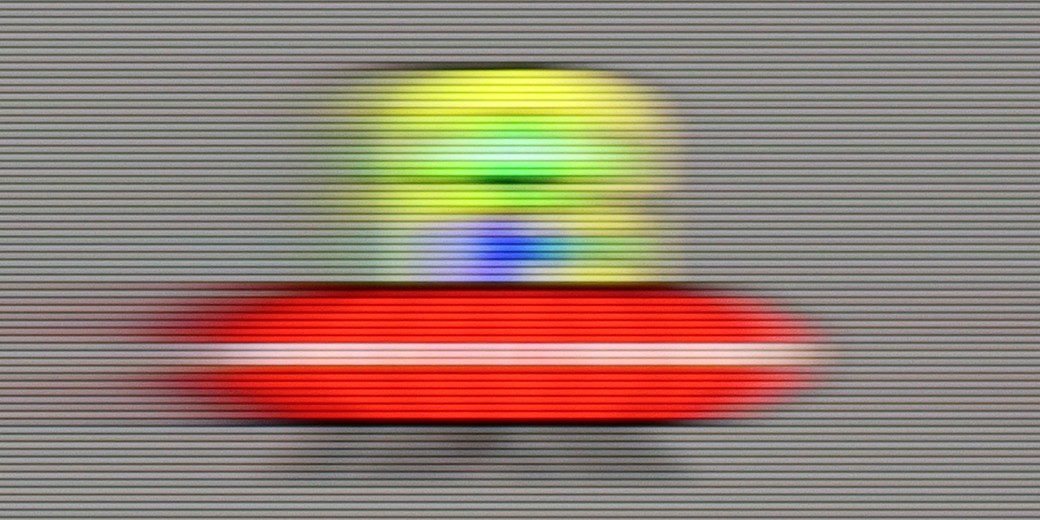
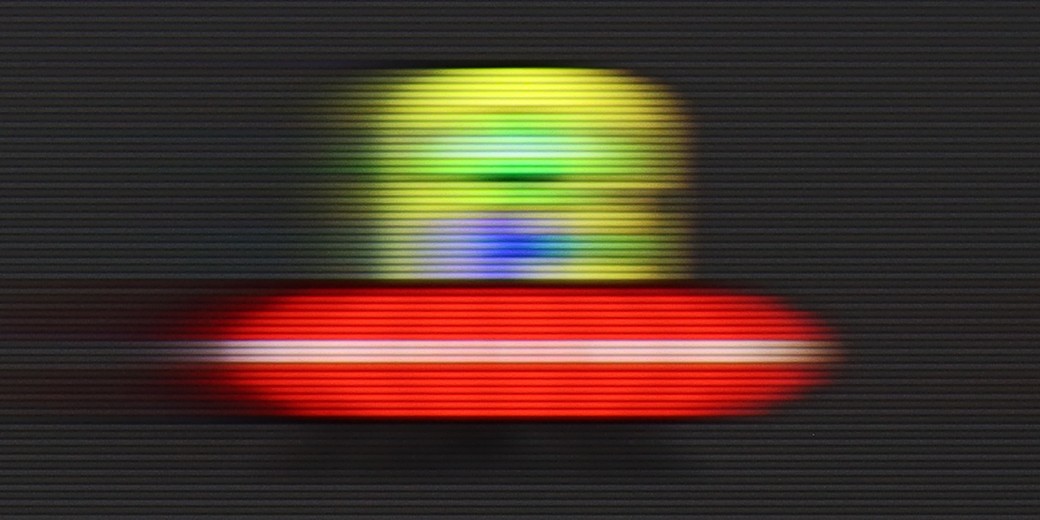
The DU8002 with a 60 Hz panel is a television that performs better for watching movies than for intense gaming. The motion smoothing feature acts as a fluid enhancer, smoothing out movement and giving scenes a more fluid appearance, which is useful for movie sessions. In the context of gaming, this model is likely only suitable for occasional entertainment.
The Samsung U8000F comes with a 60 Hz panel, so right from the start, it's clear that you can't expect miracles. It's simply the standard in this class – sufficient for everyday viewing, but without any fireworks. The TV offers one motion smoothing slider – a function called "Motion Blur Reduction", which allows us to adjust the smoothness of the image in films. Higher settings provide a more "theatrical" and smoothed effect, while lower settings maintain the original character of the film with a slight 24p effect. Interestingly, there is the "LED Clear Motion" feature, or BFI mode – which inserts black frames between the frames of the image to improve motion sharpness. However, in practice, the screen flickers significantly when this is activated, and it's best to treat this as more of an experiment rather than something that genuinely improves the gaming experience.
Console compatibility and gaming features
4.2/10
4/10
- ALLM
- VRR
- VRR range48 - 60Hz
- Dolby Vision Game Mode
- Correct implementation of HGIG
- 1080p@120Hz
- 1440p@120Hz
- 4K@120Hz
- Game bar

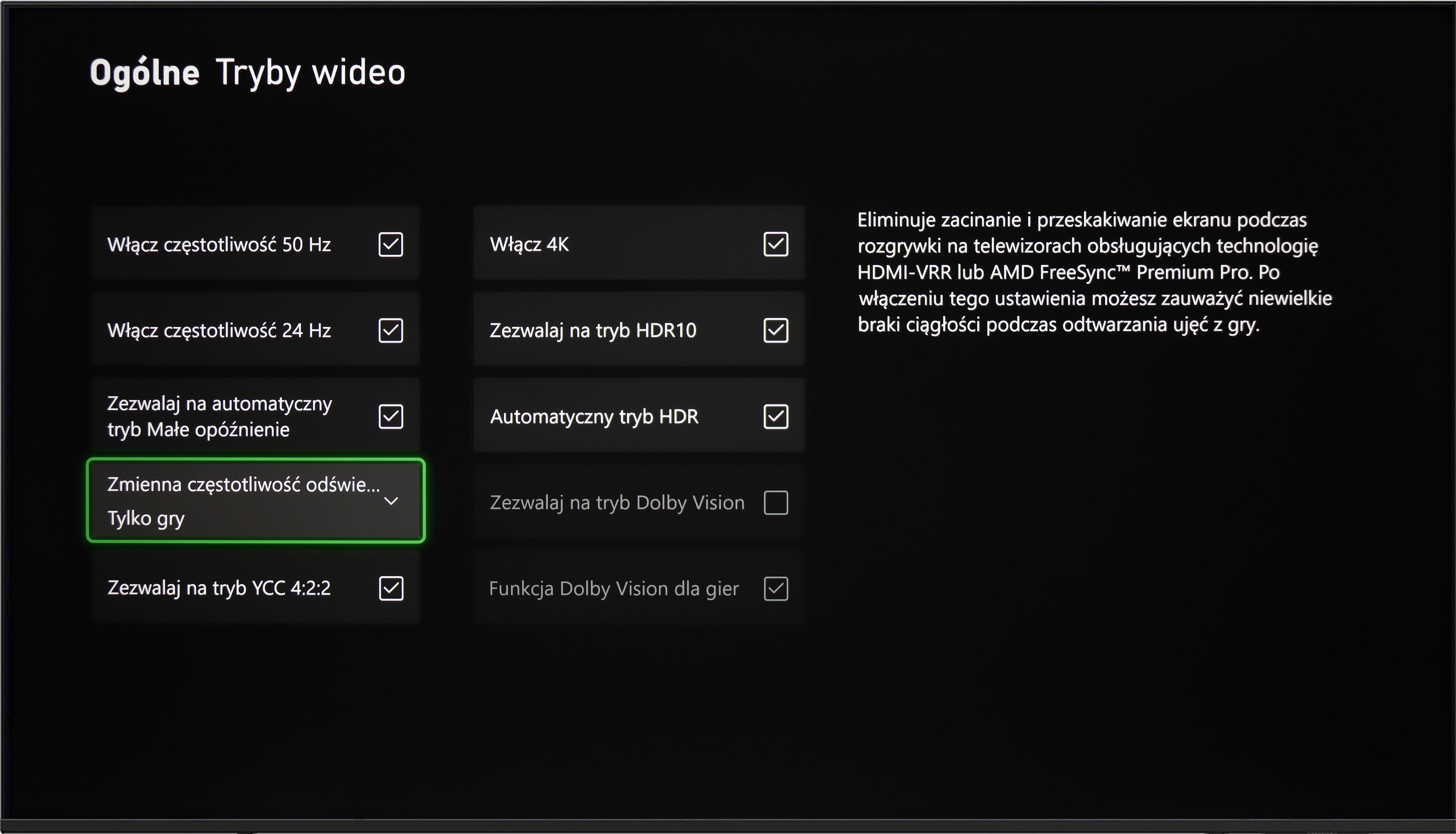

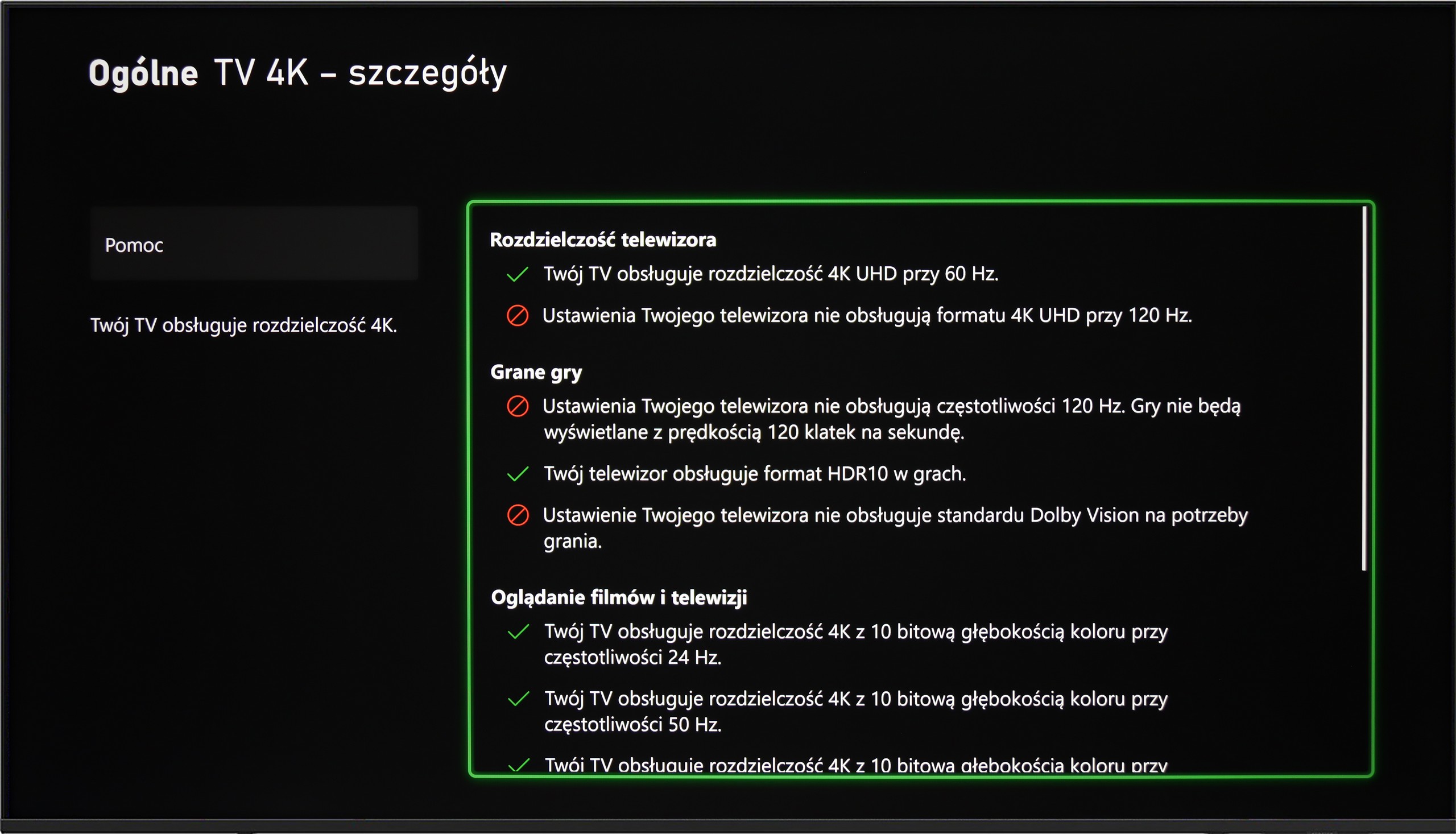

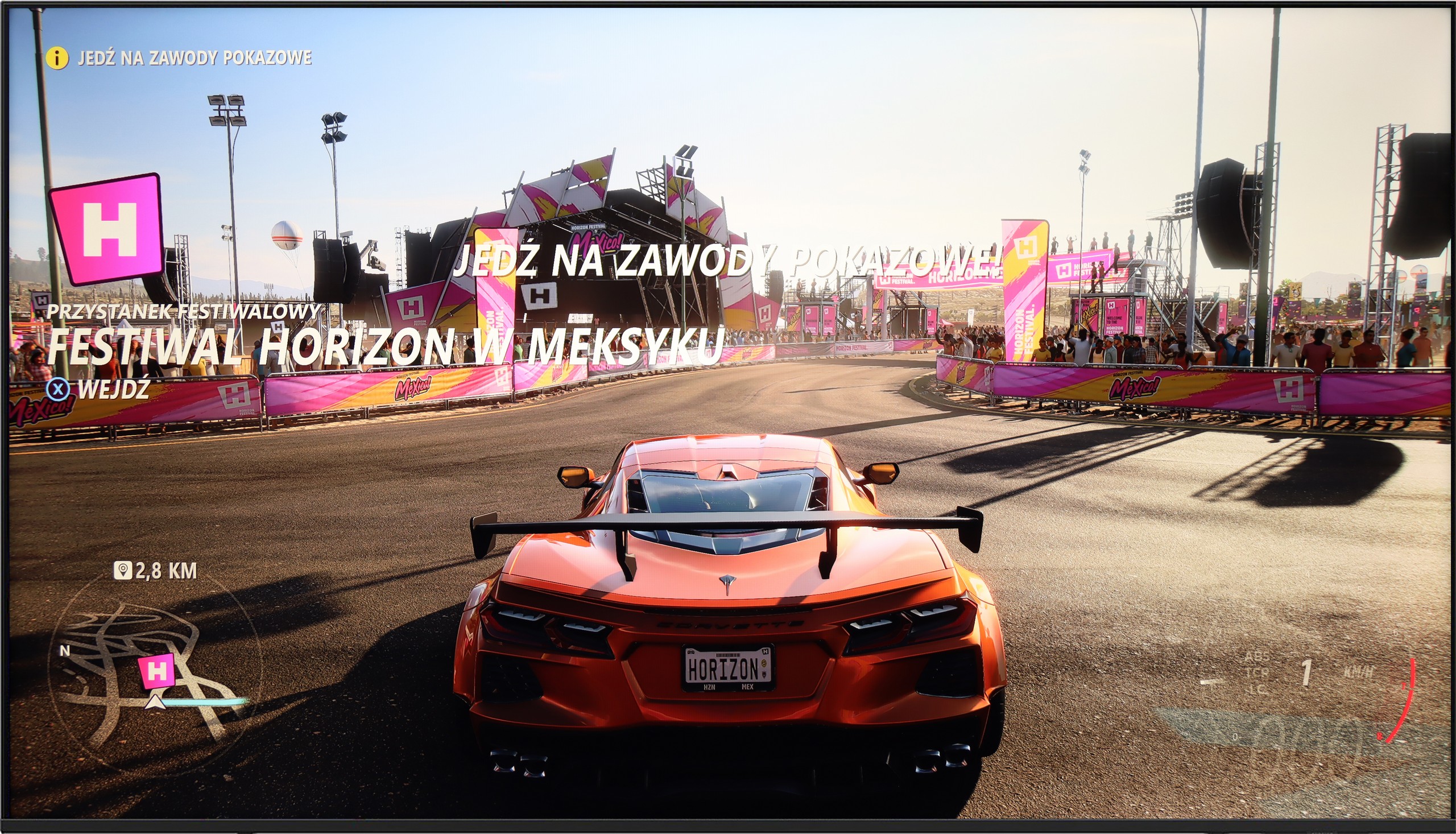

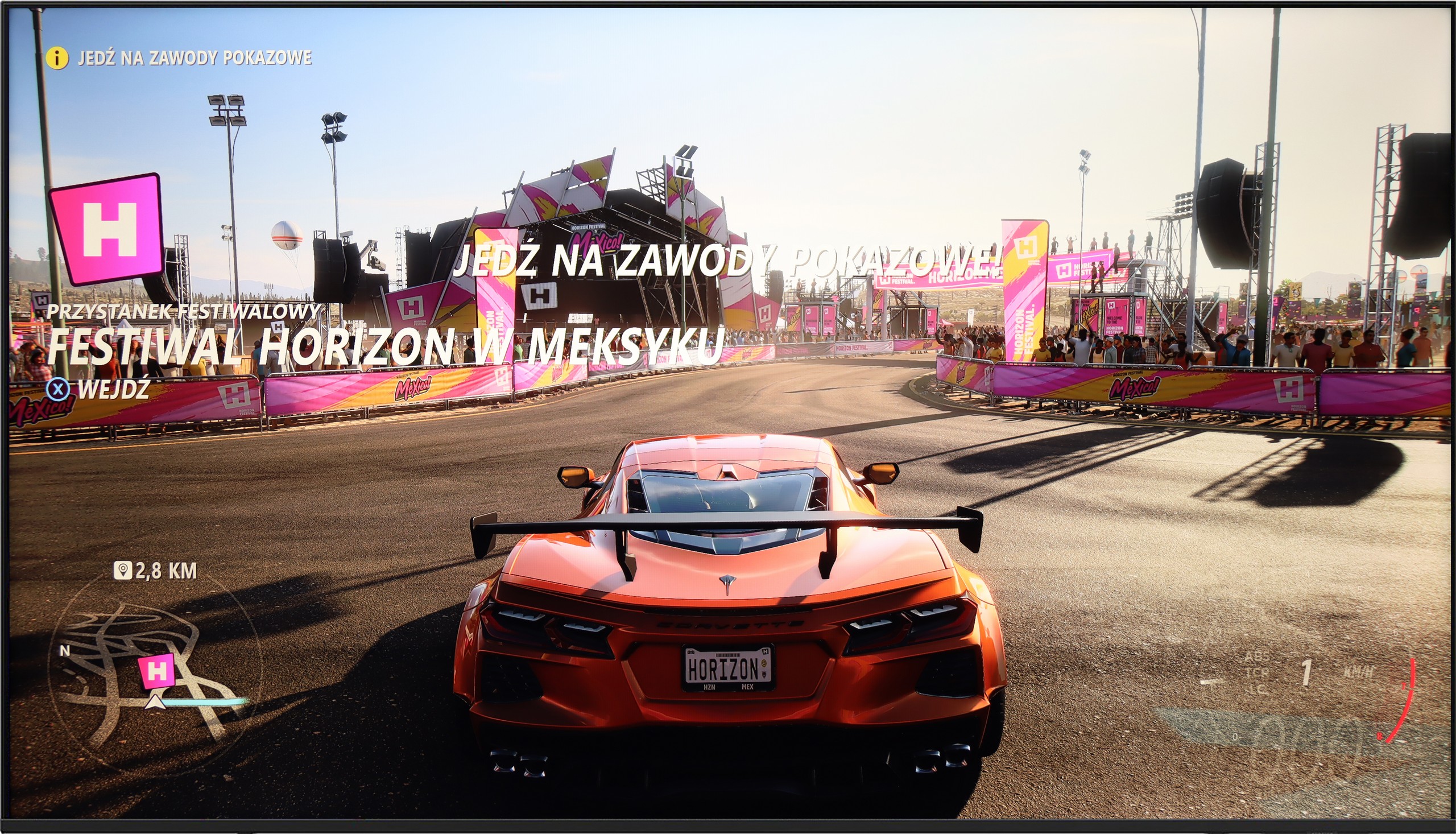
DU8002 is a television that is mainly suited for casual gamers. The 60 Hz panel won't provide the highest motion fluidity, so in dynamic games, you might miss that extra smoothness of the image. On the plus side, it has ALLM and HGiG functions, which automatically adjust the picture settings for HDR games, enhancing the gaming experience. Unfortunately, the TV only comes with HDMI 2.0 ports, so we have to forget about more advanced features like VRR or support for 4K at 120 Hz. Choosing this equipment means we will have to make do without a full set of gaming features.
Samsung U8000F offers a basic set of features for gamers, which can still prove sufficient for less demanding users. Here we have an automatic gaming mode – when a game is launched on the console, the TV switches to low-latency mode by itself, significantly improving response time. We also find the VRR feature, or variable refresh rate, which operates in the range of 48 to 60 Hz. This means that both Xbox and PS5 will not produce the 'tearing' effect on the screen – as long as we stay within this range.
Unfortunately, that's about it when it comes to advantages. Add-ons like Game Bar or higher refresh rates are reserved for higher models of Samsung from the 2025 line. In theory, the TV also supports the HGiG feature, which should adjust the HDR image to the intentions of game developers. Unfortunately – despite this feature appearing in advertising brochures and store materials – its setup on the Xbox console turned out, in practice, to be... impossible.
Input lag
10/10
10/10
SDR
HDR
Dolby Vision
The input lag on the DU8002 is definitely one of its strong points. The lag is so low that every reaction on the screen is instantaneous, making gaming smooth and enjoyable. For gamers who enjoy dynamic titles and value quick response times, this television pleasantly surprises. Even though it lacks advanced gaming features or a higher refresh rate, the low input lag is a real advantage that makes a difference.
The Samsung U8092F performed phenomenally in our input lag tests. Regardless of the resolution, the results were very low, which is truly impressive for this price segment. One can confidently say that gaming on this TV will not cause frustration due to significant delays between what we do on the controller and what we see on the screen. For most gamers, even the more demanding ones, this result should be more than satisfactory.
Compatibility with PC
6/10
6/10


The DU8002 performs excellently as a computer monitor. The 4:4:4 chroma support provides great text readability, so the texts appear sharp and clear, which is a big plus for longer work sessions and content browsing. For office tasks and everyday use, it really stands out. When it comes to gaming, the situation is a bit more complex – the 60 Hz refresh rate somewhat limits fluidity, which might not appeal to more demanding gamers. However, the low input lag is definitely an advantage, making games responsive and enjoyable. In short: super for work, less so for gaming.
Working on the computer with this television is a true pleasure. The Samsung U8092F supports chroma 4:4:4, and even though it has a VA panel, the readability of text is very, very good. The television is also suitable for occasional PC gaming, mainly due to its low input lag. However, it should be noted that the G-Sync feature does not work on this model, which is strange because VRR worked without issue on the console.
Viewing angles
6.9/10
3.7/10
DU8002 has really great viewing angles, thanks to the IPS panel. Even when looking at the screen from the side, the picture remains clear and the colours vibrant. This is a big plus, especially if we often watch movies with a larger group or work on a wide desk. You don’t have to worry about someone sitting on the side seeing a washed-out image – here, everything looks good, regardless of the angle.
TV efficiency during daytime
4.2/10
3.8/10

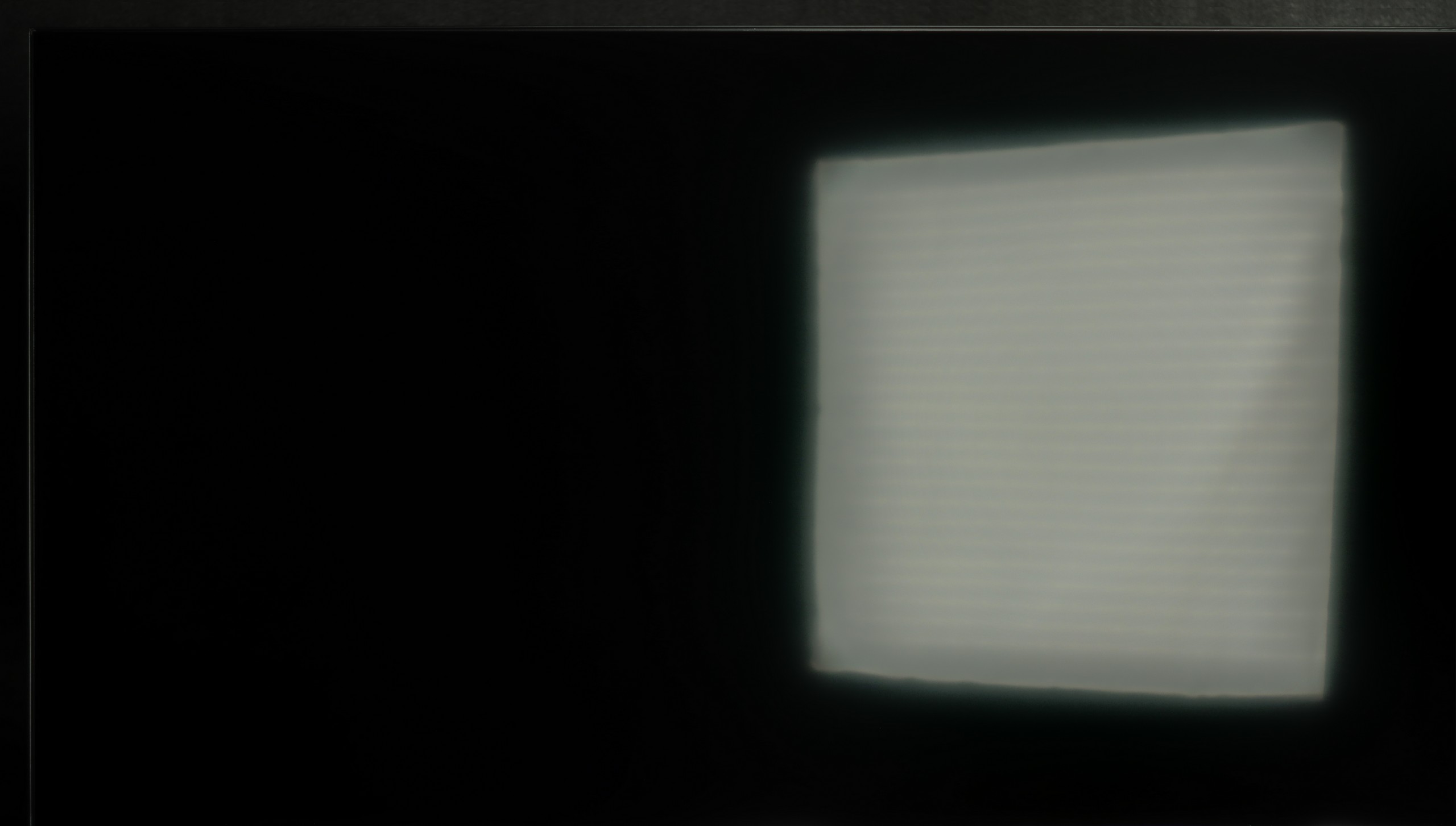

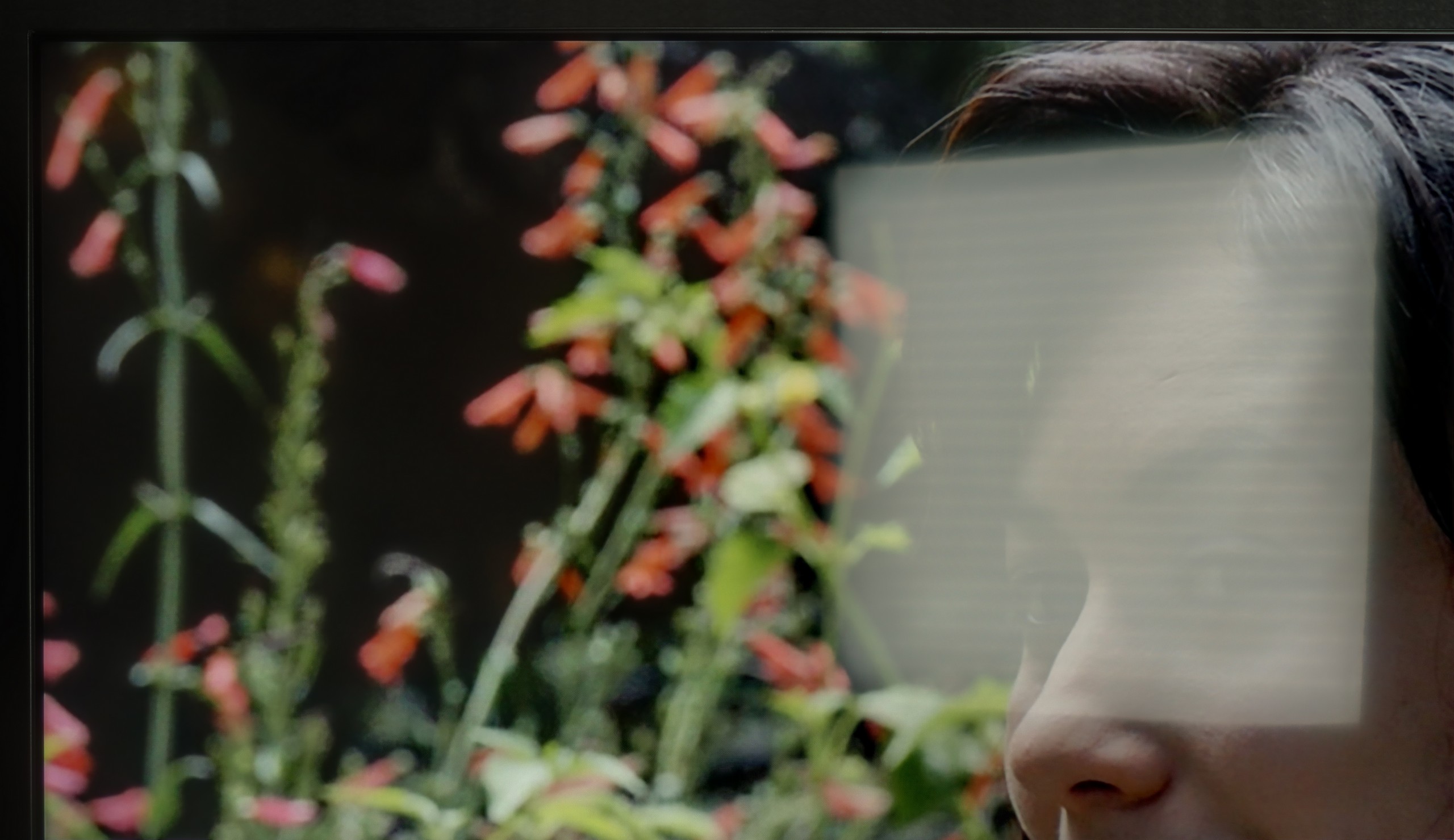
Matrix brightness
Average luminance SDR
Samsung U8000F (VA): 204 cd/m2
Samsung DU8002 (IPS): 291 cd/m2
The performance of the DU8002 television during the day is decent, although it doesn't stand out particularly. The satin display handles reflections mediocrely, so under strong sunlight, they may be noticeable. On the other hand, the stable brightness level of 300 nits works quite well in a slightly lit room, providing a clear image. This is a solid result that will satisfy for everyday use, though in heavily sunlit spaces, it may lack extra power.
Thanks to the satin finish of the Samsung U8092F panel, it handles reflection reduction quite well. The screen doesn't act like a mirror, and the colours – given the capabilities of this class of device – remain fairly saturated, even in somewhat brighter conditions. Unfortunately, the finish alone won't perform miracles. The TV is simply too dark to effectively cut through very challenging lighting conditions. If we place it opposite a light source (e.g. a large window or a strong lamp) – unfortunately, one must reckon with the fact that not everything will be clearly visible on it.
Details about the matrix
Subpixel Structure:

Panel uniformity:
TV features
6.3/10
5.3/10
- HDMI inputs3 x HDMI 2.0, 0 x HDMI 2.13 x HDMI 2.0, 0 x HDMI 2.1
- OutputsToslink (Optical audio), eARC (HDMI), ARC (HDMI)eARC (HDMI), ARC (HDMI)
- Network InterfacesWi-Fi 2.4GHz, Wi-Fi 5GHz, Ethernet (LAN) 100MbpsWi-Fi 2.4GHz, Wi-Fi 5GHz, Ethernet (LAN) 100Mbps
- TV receptionDVB-T, DVB-T2, DVB-CDVB-T, DVB-T2, DVB-S, DVB-S2, DVB-C
Classic features:
- Recording to USB (terrestrial TV)
- Recording programming
- Picture in Picture (PiP)
- RF remote control (no need to aim at the screen)
- Backlit remote control
- Teletext
- Audio only mode
- Possibility to connect Bluetooth headphones to the TV
- Possibility to simultaneously use Bluetooth headphones and the TV speaker
Smart features:
- AirPlay
- Screen mirroring (Windows Miracast)
- Wyszukiwanie głosowe
- Voice search in native language
- Ability to connect a keyboard and mouse


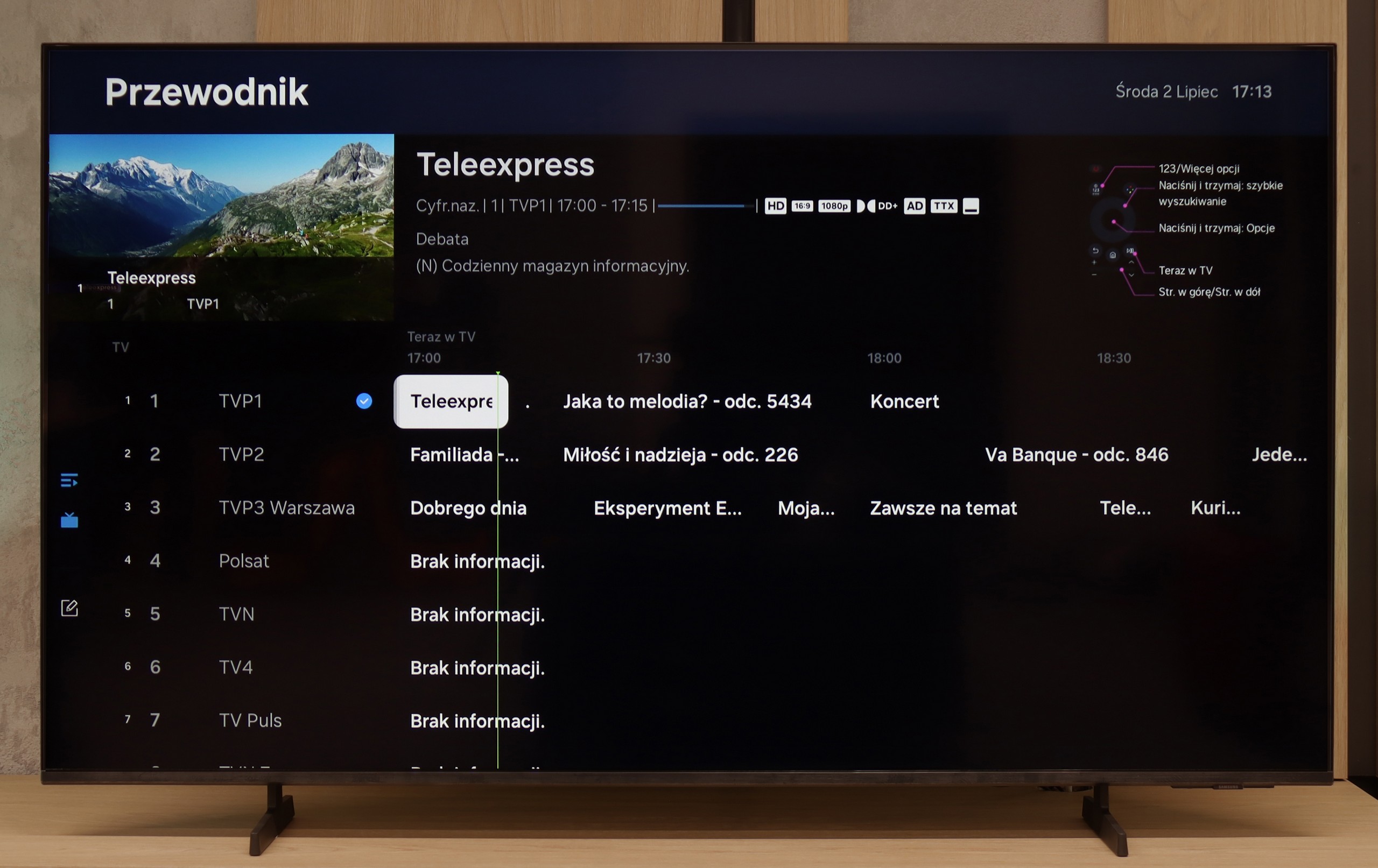
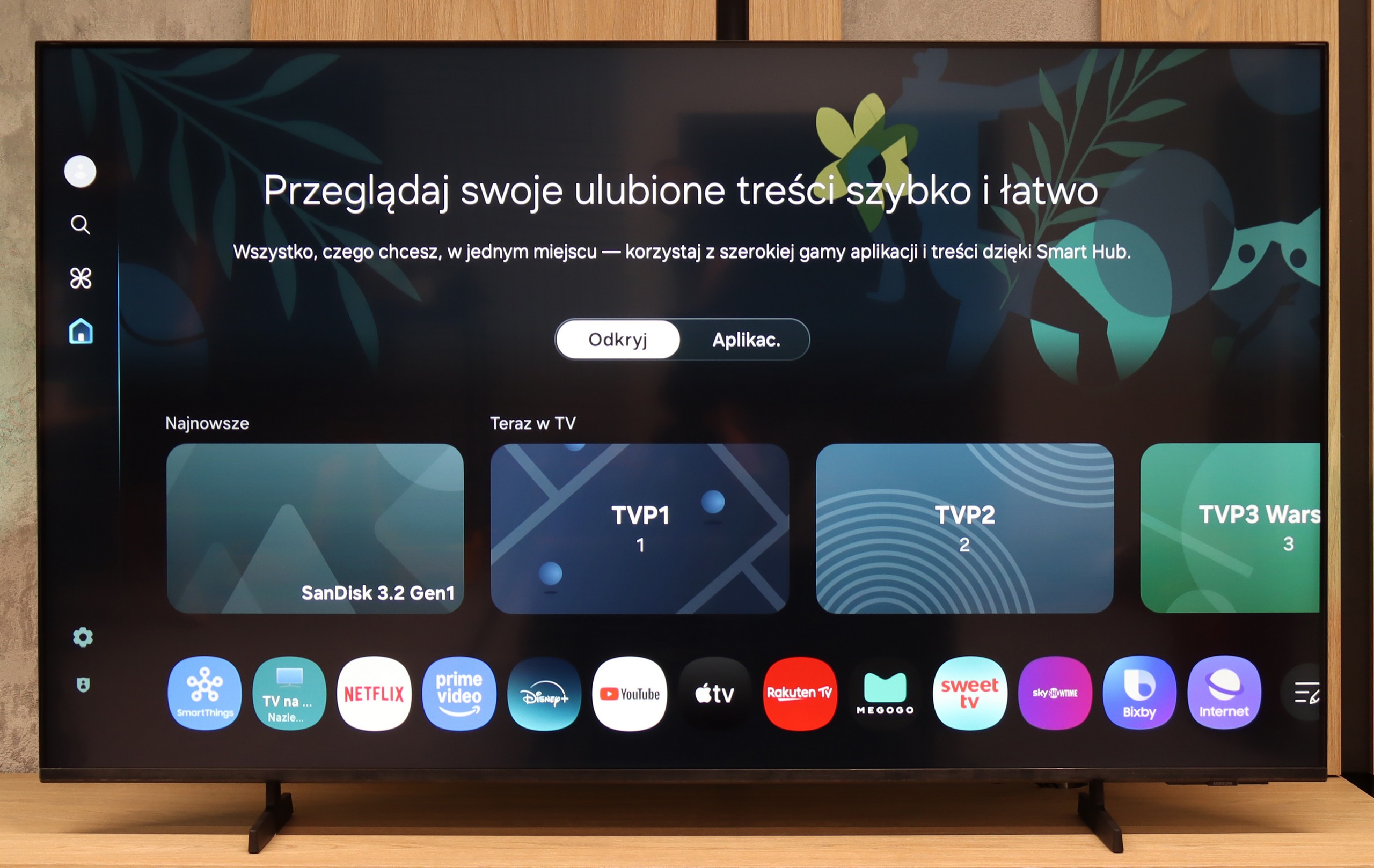
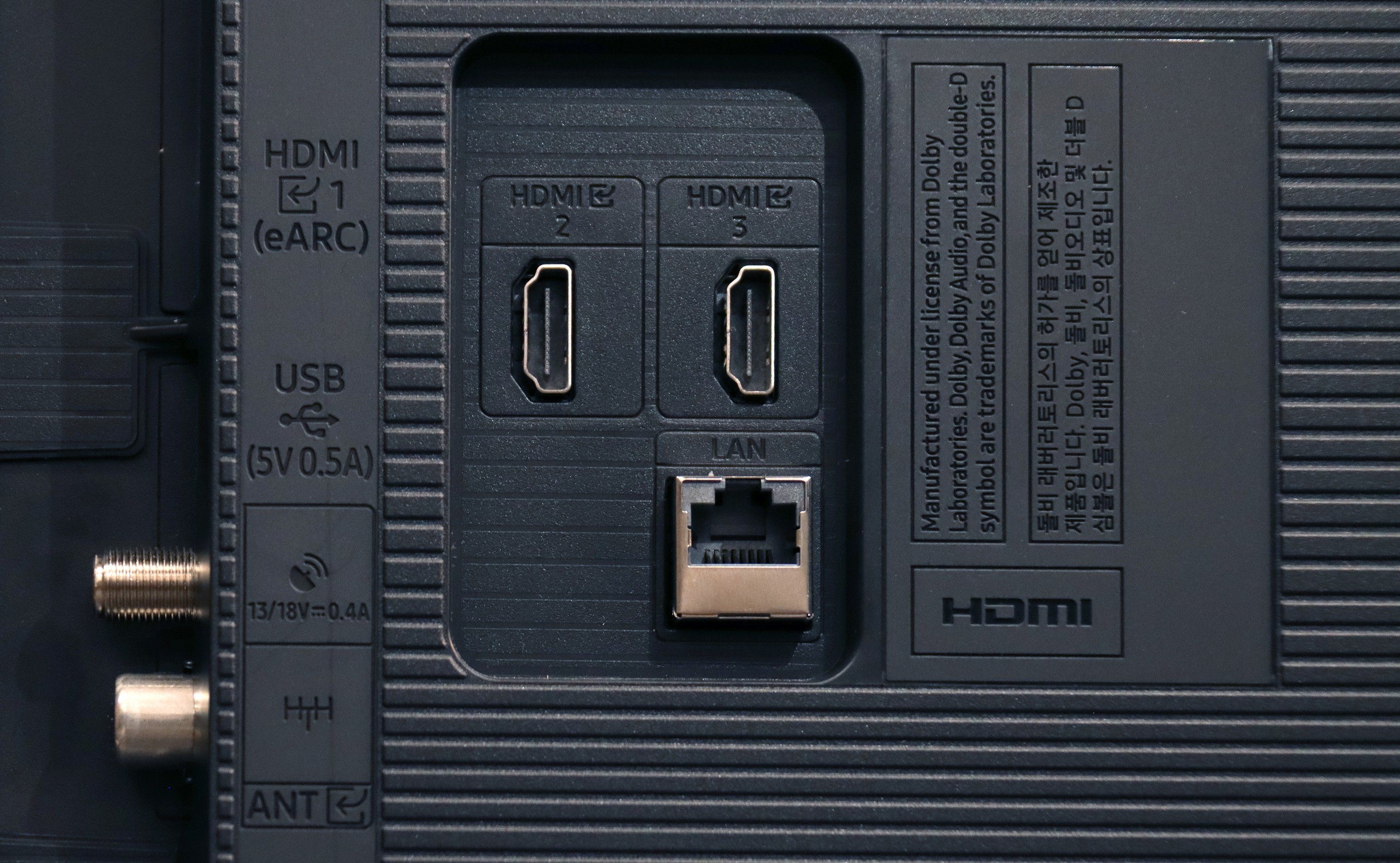
The Tizen system in the DU8002 television is a big plus. It runs smoothly, offering a lot of apps to choose from, although there are some limitations, such as the absence of Canal+. The voice control in Polish is a plus, simplifying daily navigation. Tizen also provides a solid foundation for building a smart home thanks to integration with SmartThings – a great option for those who want to manage devices at home from one place.
Among the useful features, we find AirPlay and Miracast, which make it easier to stream content from phones or laptops to the TV screen. The ability to connect devices via Bluetooth is another advantage. As for the downsides – the lack of a PiP (picture-in-picture) function and the option to record programs can be disappointing. Fortunately, the Samsung remote, although small and sleek, has its advantages. It can control external devices, such as set-top boxes, which often offer recording features, which can mitigate this drawback.
When it comes to design, the DU8002 is a true gem. It is one of the sleekest devices available on the market. With the right mount, it can be mounted on the wall, resembling a hanging frame with a picture – the effect is impressive and fits perfectly into modern interiors. Additionally, the adjustable width of the stand allows it to be matched to various pieces of furniture, although unfortunately, this option is not available in all sizes.
Samsung U8092F – like all this year's models from this brand – runs on the Tizen operating system. The system itself is really well developed: we have access to many applications (although not all), a well-developed smart home support, and various extras, including exclusive Samsung applications. There are also features like AirPlay and Chromecast, which allow us to easily connect our phone to the television and stream multimedia.
Unfortunately, as this is Samsung's cheapest series in 2025, the manufacturer decided not to include a solar remote. In the package, we find a classic infrared remote, which visually resembles the newer version, but unfortunately lacks voice functions. As for typical “television” extras – the recording function and the PiP (picture in picture) mode are missing. However, a plus is the HDMI eARC, which allows for easy control of the included remote for devices like a decoder or soundbar – and it does indeed work seamlessly.
Playing files from USB
9.1/10
9.3/10
Supported photo formats:
Maximum photo resolution:

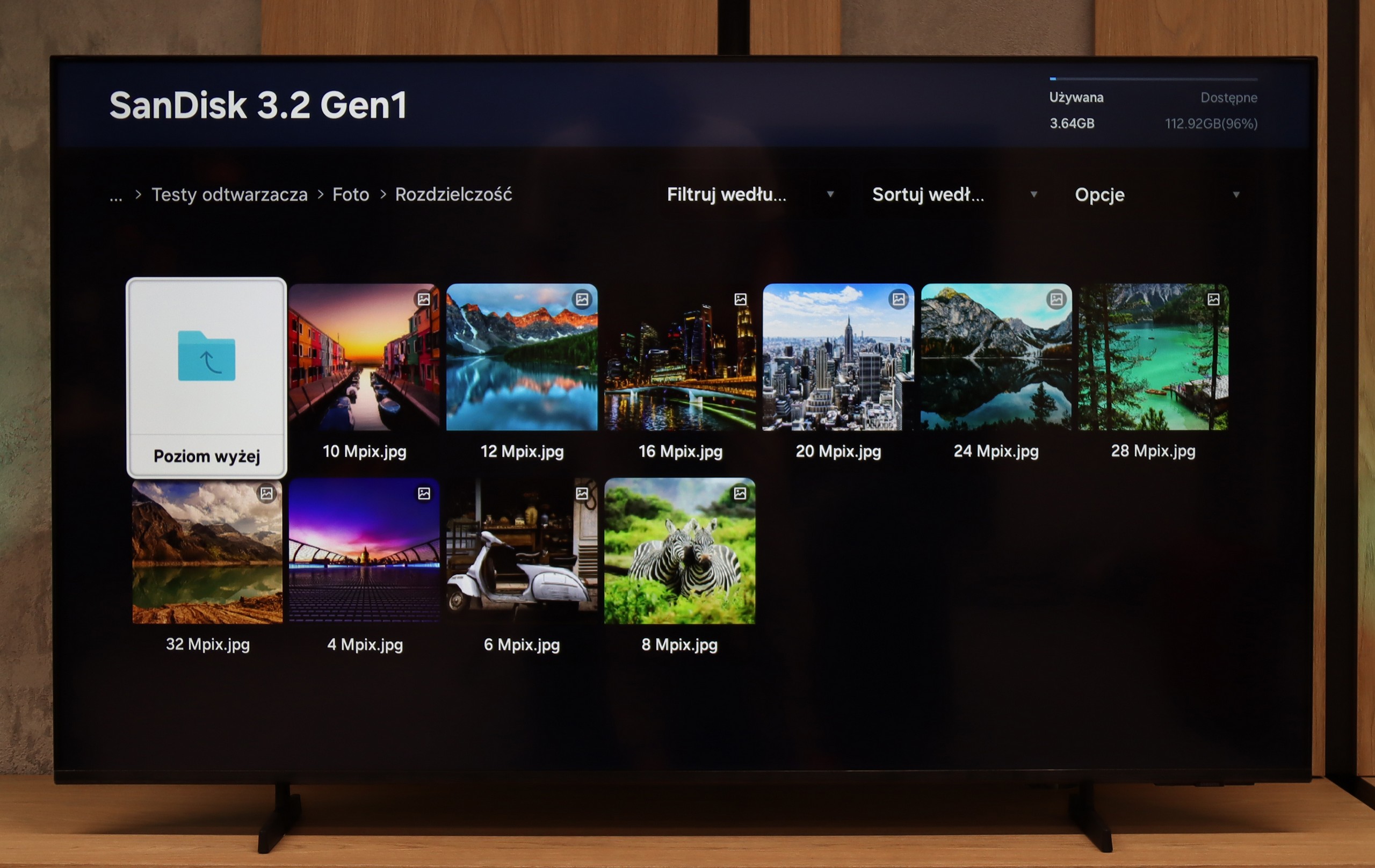
Playing files from USB on the DU8002 television is at a very good level, similar to most Samsung models. The television handles most popular audio, video, and photo formats, making multimedia playback convenient and hassle-free. Support for Polish characters in subtitles and the ability to change the font colour are significant advantages that users who like to customise their experience will appreciate. Among minor drawbacks, one could mention the lack of support for the HEIC photo format, popular among Apple users. Nonetheless, playback of files from USB is at a very satisfactory level and should meet the expectations of most users.
Samsung U8092F handles playback of files fairly smoothly – the television supports most popular audio and video formats. Of course, it doesn't support Dolby Vision, but we simply won't find that in any Samsung model.
Some reservations can be made about the support for external text files – those that the user would like to add as subtitles to the film. During our tests, the television only played TXT files, and other formats, such as SRT or SUB, unfortunately did not work. This may not be a problem for everyone, but it's worth knowing. Perhaps it is an issue to be improved in the future with a software update for the television.
Apps
8.7/10
8.7/10














































Sound
5.9/10
5.7/10
- Subjective sound quality:5.9/105.7/10
- Dolby Digital Plus 7.1:
- Dolby True HD 7.1:
- Dolby Atmos in Dolby Digital Plus (JOC):
- Dolby Atmos in Dolby True HD:
- DTS:X in DTS-HD MA:
- DTS-HD Master Audio:
The sound in the DU8002 is clear and crisp, but unfortunately it lacks bass – this is the effect of a slim profile that sacrifices sound depth for an elegant appearance. When it comes to playing audio files, we won’t find support for DTS here, which may be a downside for more demanding users. Fortunately, the television supports the Dolby Digital Plus codec, allowing for Dolby Atmos sound to be transmitted to other devices, such as soundbars. This means we can enjoy spatial sound that adds a new dimension to movies and music.
U8092F doesn't pretend to have a home theatre on board. We get a standard set of 2 x 10 W, which sounds fine but without much emotion, though with a light bass. For everyday viewing, such an audio setup is more than sufficient. We were pleasantly surprised that it managed to play a film with the built-in Dolby Atmos codec (JOC) – although, of course, we're not talking about true surround sound here.


